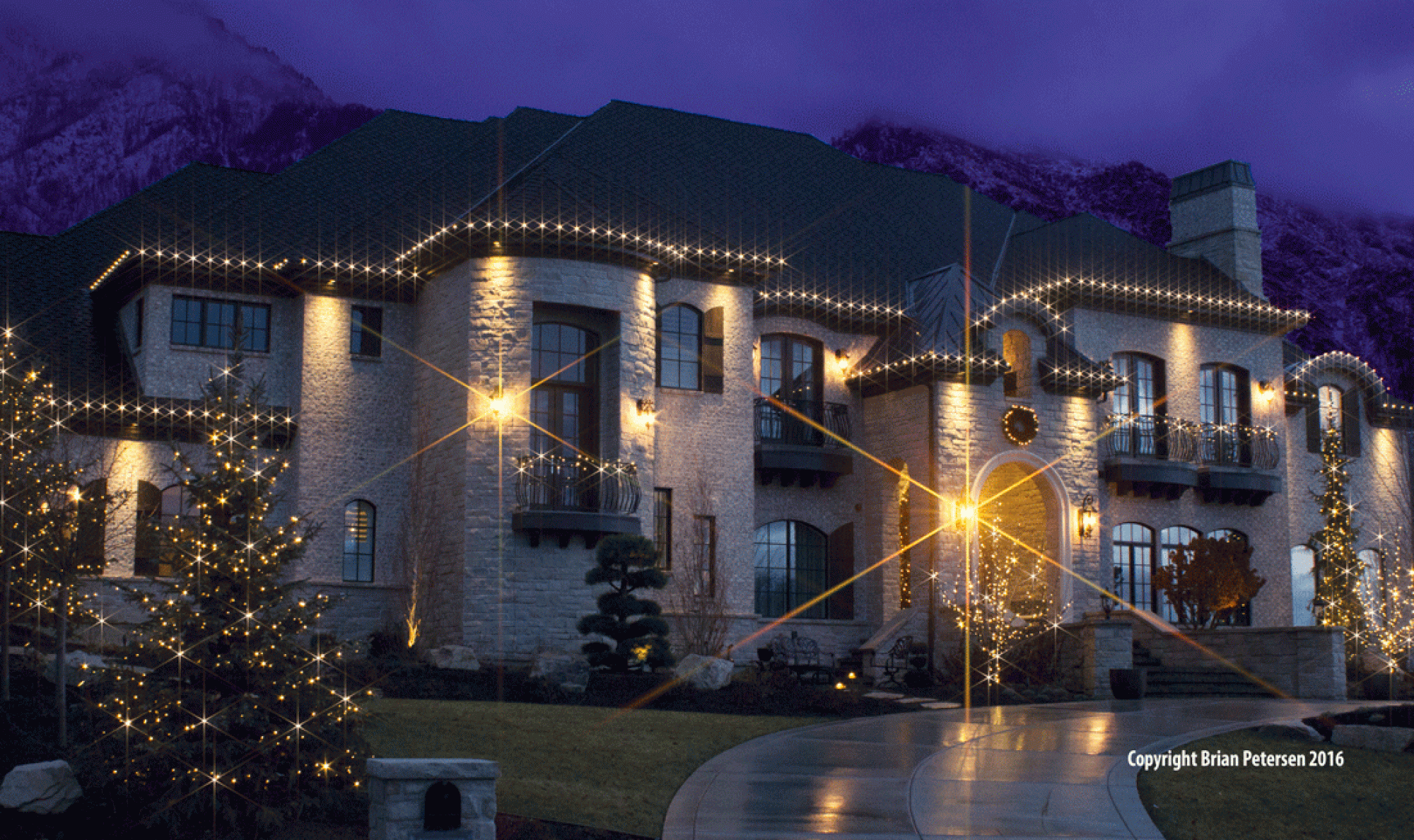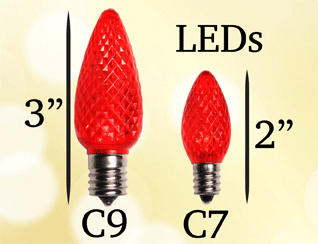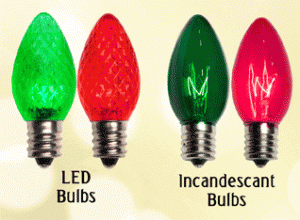Are all LEDs the same quality? Definitely NO! In fact the quality varies greatly. To help understand quality lets talk a few terms: Bulbs, Lights, Light Sets (or stringers).
Bulb: A bulb is just that a bulb with no wire attached. Certain LED and incandescent bulbs are interchangeable with sockets capable of receiving either an incandescent or an LED bulb (of course both bulbs have to be the same size/style/base (such as C7 or C9).
A Light Set includes bulbs, sockets, and wire (or cord). It is a full set ready to plug in and use.
The term lights is used to mean either a bulb or light set or anything in-between.
Bulb quality: Manufacturing quality and the number of light-emitting diodes included in the bulb will both affect the quality of the bulb. An inferior bulb will often include one diode and a typical professional grade bulb for a C7 or C9 style bulb will often include 3 diodes. Obviously 3 diodes will be brighter than one. Poor manufacturing quality will limit the life span of the bulb or produce non-functioning bulbs.
Light Set Quality: The quality of a light set depends on (1) quality of the bulb (2) quality of the cord and (3) quality of the workmanship for connecting the sockets and wire. Often the third item is the most detrimental in low quality light strings. Once the electrical connections begin to break-down, the light string becomes worthless. I think we have all thrown away many cheap light strings where the internal electrical connections no longer work.
Replaceable or Retrofit Bulbs: Bulbs need to be replaceable on all Christmas light strings. Unfortunately you can not always find a replacement bulb and some cheap sockets do not work well to remove or to insert a replacement bulb. On some cheap light strings the bulbs are not replaceable.
Retail, Pro, and Commercial Grade Lights: Generally Christmas bulbs and light strings can be categorized into three quality grades: Retail, Pro and Commercial. Professional installers avoid retail grade. So should you. Often to find Pro or Commercial grade materials you will need to purchase from a professional level store. These stores are the same places that professional installers use. In this market area (Salt Lake and Utah Counties) Sprinkler World is a key source for pro and commercial grade Christmas light part and materials.
Starting with the right bulbs, cord, and parts will help make your Christmas lights look professional and save you a great deal of difficulties along the way.


